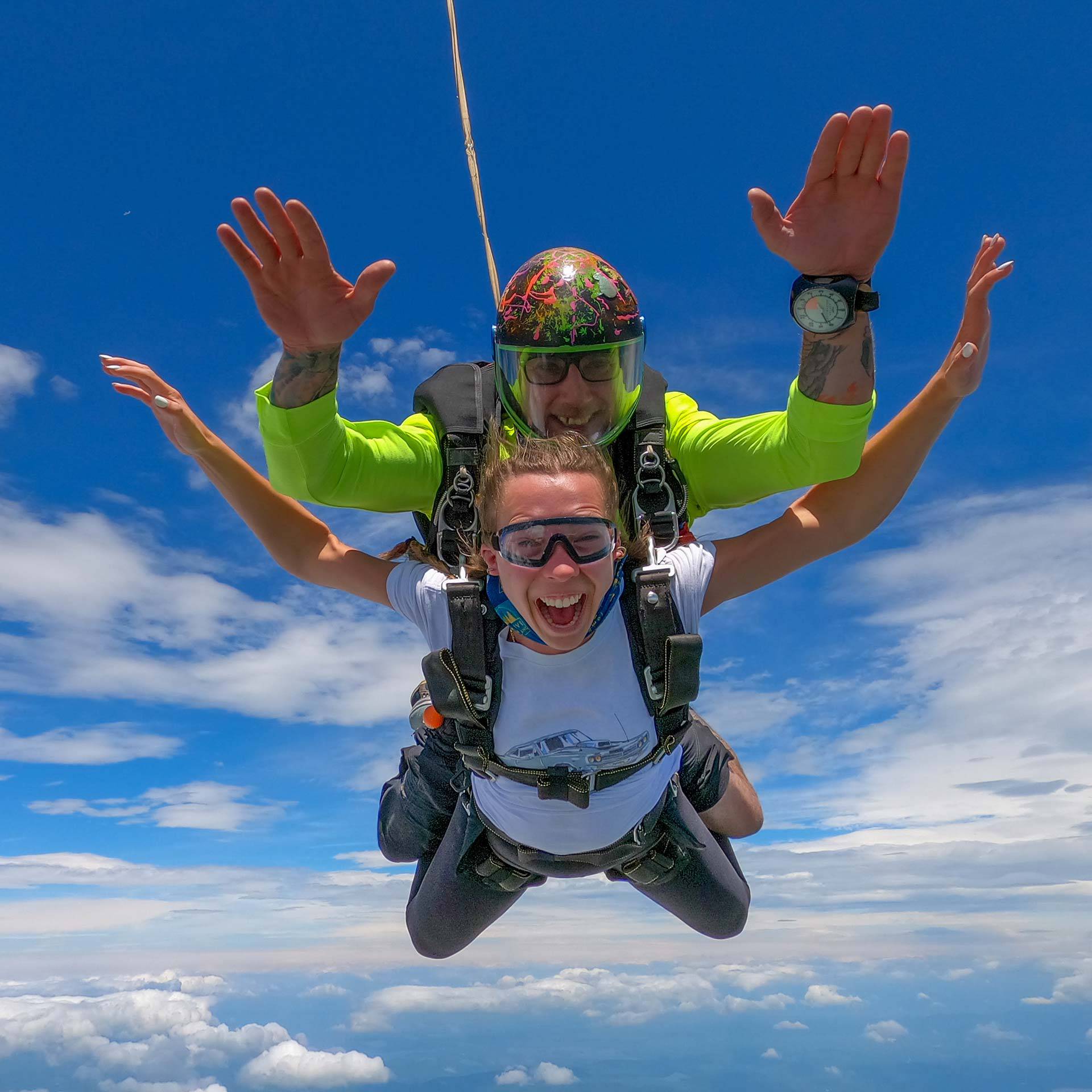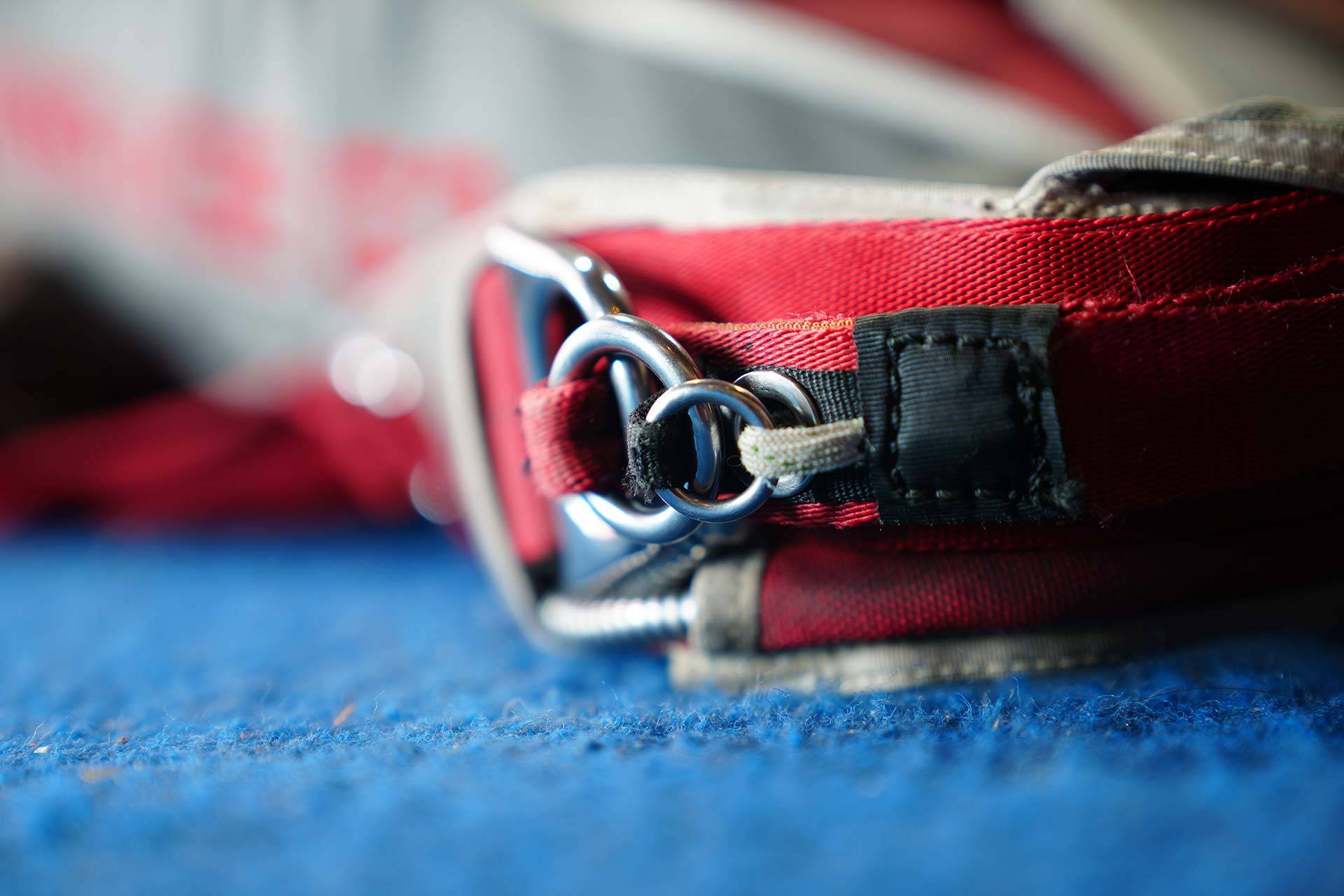Accelerated Freefall (AFF) Course
Learn To Skydive Solo With SNE
When Once Isn’t Enough
If you’ve made a tandem skydive and you can’t wait to get back up there, sounds like we need to save you a seat in our schoolhouse!
At Skydive New England, we implement a structured curriculum for learning to skydive called Accelerated Freefall – AFF. It’s a scaffolded program sanctioned by the United States Parachute Association (USPA), so you build on your skills as you advance. Progress at your own pace. Some bang it out in a few weeks, some take all season. Choose your own adventure!
AFF Training Course
Before you can put your knees in the breeze, you must complete ground school. Over six to eight hours, this comprehensive training session will cover:
- Aircraft safety
- Freefall body position
- Emergency procedures
- Landing procedures
Weather permitting, the first jump is usually made on the same day, right after you pass your ground school test. Next, you’ll complete a minimum of six additional jumps that put everything you’ve learned in theory into practice – first jumping with two AFF instructors and then one. Sounds exciting, right? It’s super exciting!
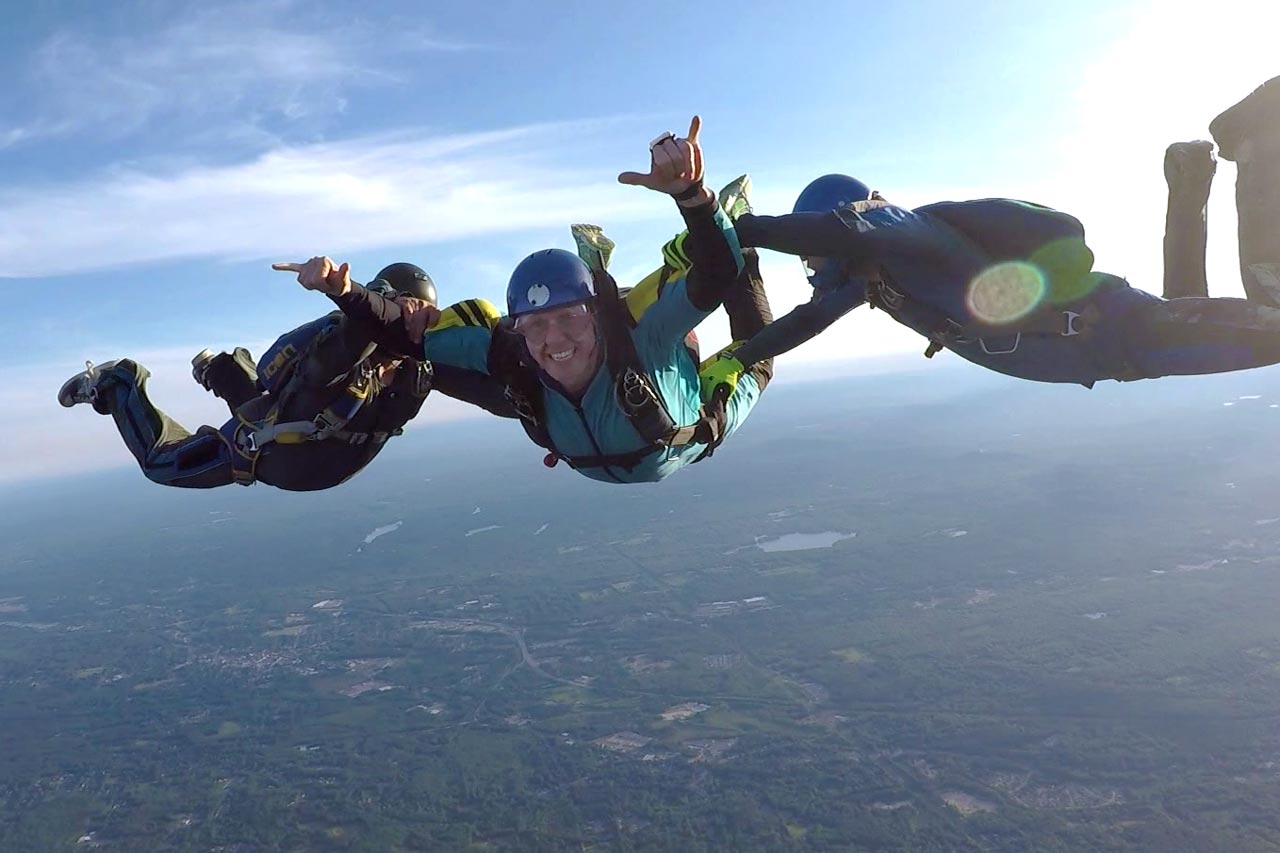
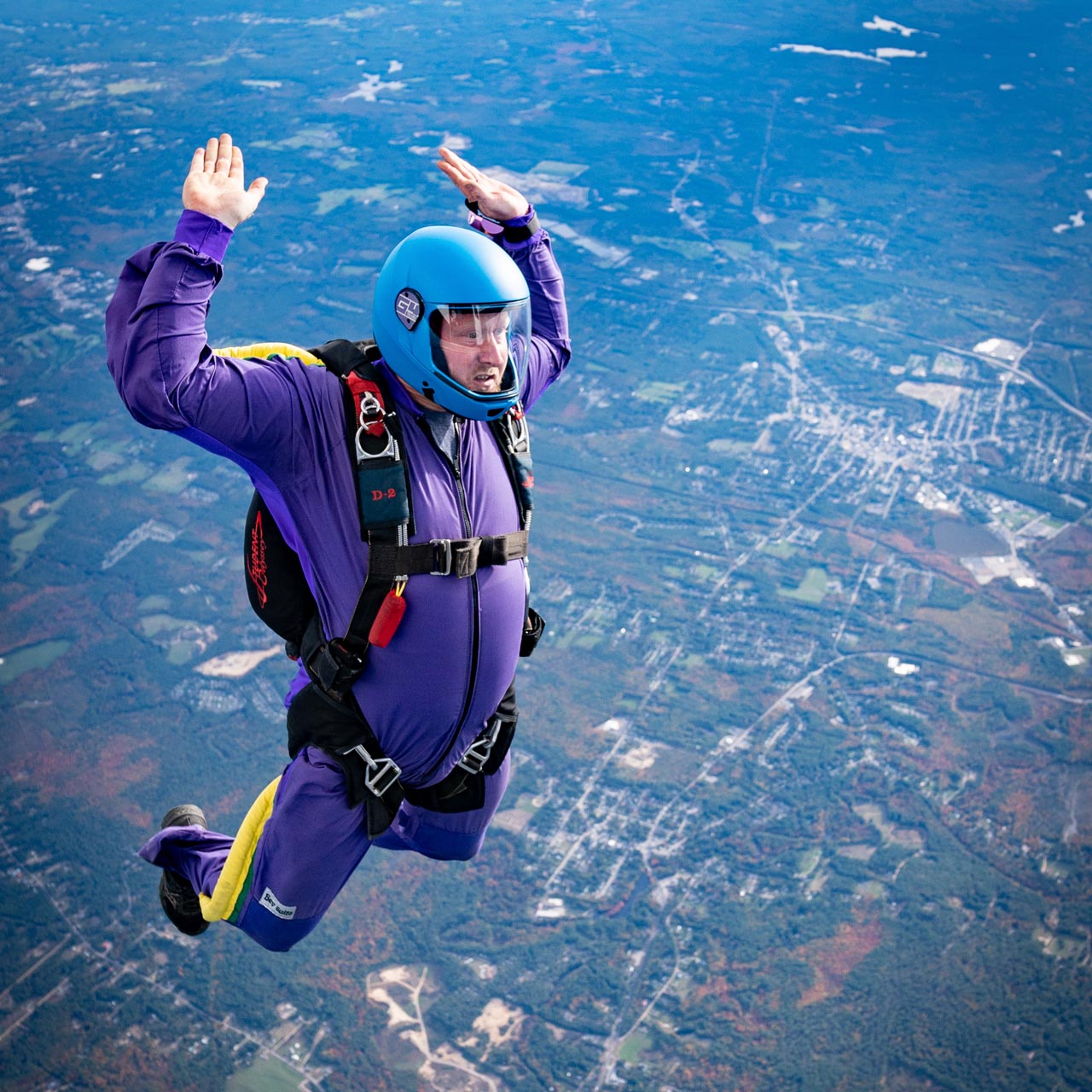
AFF Training Cost
Course tuition includes pre- and post-jump instruction, gear rental, Instructors/Coaches, and your jumps. AFF students must complete a minimum of seven jumps. Additional jumps needed in order to demonstrate mastery of the curriculum are priced individually.
Accelerated Freefall (AFF)
| Options | Price |
|---|---|
|
AFF Ground School
Manual $10, First Jump Course Instruction $145. |
$155 |
|
Jumps 1-3
Category A-C; Jump with 2 AFF Instructors. |
$250 per jump |
|
Jumps 4-8
Category C, D, E1, E2; Jump with 1 AFF Instructor. |
$210 per jump |
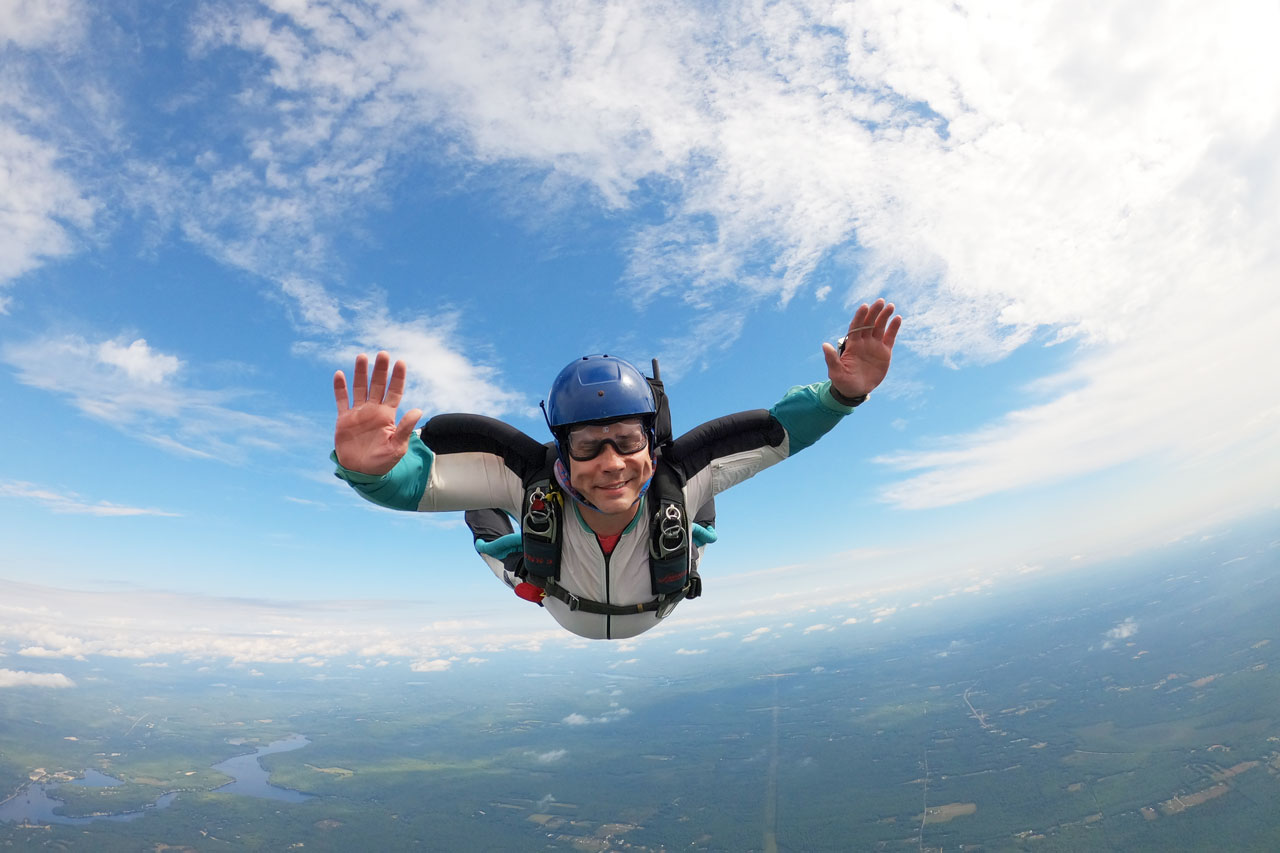
AFF Solo Skydiving Requirements
Want To Drop It Like It’s Hot?
Discover what it takes and how to solo skydive. From how many tandem jumps before skydiving by yourself is permissible and more.
A License Progression
There are four license levels issued by the United States Parachute Association: A, B, C, D. After graduating from the AFF program, you are cleared for solo supervision and can pursue your A License!
To achieve your A License (and unlock wicked achieveables), you must:
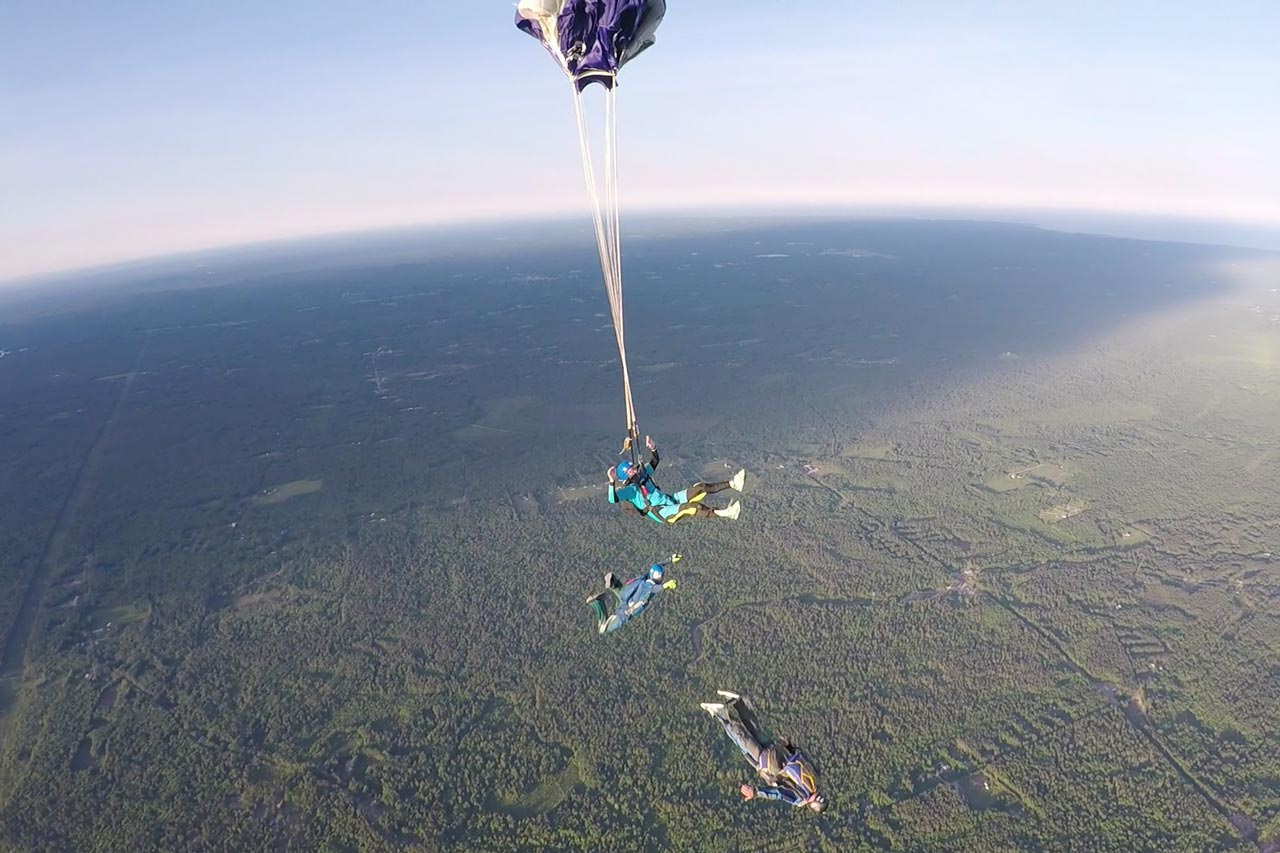
A License Training Tuition
Course tuition includes pre- and post-jump instruction, gear rental, Instructors/Coaches, and your jumps. When you’ve completed your A License Proficiency Card, you’re cleared for take off!
A License Progression
| Options | Price |
|---|---|
|
Coach Jumps
6 jumps with an AFF Instructor or Coach. |
$150 per jump |
|
Solo Jumps
12 solo jumps, without an AFF Instructor or Coach. |
$70 per jump |
Courses & Events
We offer classes, camps, and courses throughout the skydiving season (May – October). Schedule a packing class with one of our packers, and keep your eye on our events calendar for upcoming training opportunities.
Stay & Play
The Skydive New England campus is beautiful – why don’t you kick your shoes off and stay awhile? We have a restaurant on site, the Ripcord Café, clean bathrooms, hot showers, a huge fire pit, and three choices of where to rest your head:
